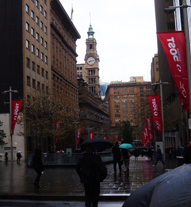The Australian Institute for Disaster Resilience (AIDR) has released updated principles and practical advice for crowd health and safety – from transport hubs to major events. A free 83-page downloadable pdf, the Safe and Healthy Crowded Places Handbook encourages a proactive approach from event organisers, venue managers, emergency services, government and others. While put together by Australians, it does have general use as for example the first three chapters – covering fundamental thinking, approach and processes to all chapters – are guided by the principles, framework and risk management process outlined in the international standard ISO 31000, on ‘Risk management – Guidelines’. Covered equally are places that have crowds some or all of the time – airports, beaches, shopping centres – and places attracting a one-off crowd such as a festival or concert.
AIDR CEO Stuart Ellis said: “Events and gatherings in public places are an important part of Australian life. This resource is the authoritative guide for promoting safety and resilience in crowded places, whether it’s a beach, an airport, a shopping centre or a festival. The handbook contains user-friendly information on risk management, site planning, crowd psychology, communication and other issues, and complements Australia’s Strategy for Protecting Crowded Places from Terrorism.”
AIDR developed the handbook on behalf of the Australian Government, and the document suggests it should be read with Australia’s Strategy for Protecting Crowded Places from Terrorism.
Visit https://knowledge.aidr.org.au/resources/handbook-15-safe-and-healthy-crowded-places/. Contact AIDR to purchase a print edition.
The handbook makes the point that crowds amplify a problem. “In a crowded place, a seemingly small hazard like a cable lying on the ground can create a major risk. A person walking over that cable might trip and cause a domino effect on other people.” Risk management must be ongoing: “An important part of managing problems is to recognise that they are risks. Some risks are small and easily corrected; some require enormous effort, and possibly financial resources, to manage. Other risks may never occur. And then there are risks that were never considered. Experienced managers know what can go wrong and are aware that unpleasant surprises may occur. The nature of crowded places means there is always change, such as numbers of attendees, new suppliers and new event information. This also includes external changes, for example in relation to transport, health and rules and regulations.”
An inaugural Australian disaster resilience conference on September 6 and 7 in perth, Western Australia, has resilience as its theme.
Pictured, Martin Place, downtown Sydney.










